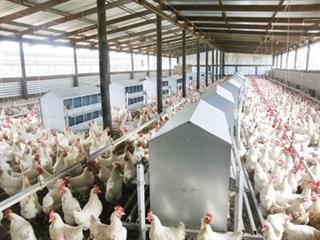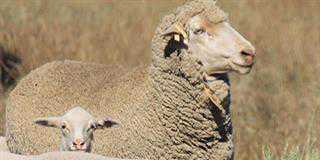
Calls to diminish the use of antibiotics in animal and human medicine are becoming more frequent in South Africa and the world over. Parties such as the Global Antibiotic Resistance Partnership (GARP) and the UK’s Alliance to Save our Antibiotics aim not to ban the use of antibiotics, but to ensure they are used prudently, to treat real disease and under the correct circumstances.
In so doing, this may prolong the time that current antibiotics remain useful and will also comply with residue regulations. The widespread misuse of antibiotics could lead to drug resistance and render ineffective antimicrobial drugs for diseases such as tuberculosis and HIV-related complications.
The global problem of antimicrobial resistance is particularly serious in developing countries, where the rate of infectious disease is high and patients can’t afford newer, more expensive antibiotics. Yet antibiotics are used all too often to treat minor ailments, and this applies to both humans and animals.
Where antibiotics are misused on farms, it contributes to an ever-increasing amount of antimicrobial resistance as bacteria evolve to withstand existing antibiotics. These resistant bacteria can be transferred to humans via the food chain. “On farms, the greatest volume of antibiotics are used in intensively farmed poultry (including broilers for meat and layers for eggs) and pigs.”
These animals are kept indoors at high density, which promotes the rapid transmission of bacterial infections, primarily affecting respiratory and intestinal tracts. Feedlot cattle and dairy cows receive the second greatest volume of antibiotics.
“Antibiotics are commonly used for disease outbreaks, which are generally unpredictable. South African farmers have enthusiastically embraced prevention of disease by vaccination, ever since Sir Arnold Theiler founded the Daspoort Bacteriological Laboratory in 1898,” she says. This is problematic, because the more antibiotics are used on a farm, the greater the chance that bacteria could develop resistance to it.
“Healthy animals have vast numbers of normal bacteria in their systems, which never cause disease, and some are helpful, producing vitamins and other beneficial bacteria. If an antibiotic is used to treat, say, foot rot, all the normal inhabitant bacteria that come into contact with the antibiotic have the potential of developing resistance to the antibiotic. These normal bacteria can then transfer the resistance to a disease producing bacterium when it enters a herd or flock. “The resistance could develop in a totally innocuous bacterium, which could then transfer it to a pathogenic, disease-causing bacterium at any time,” she says.
Added to this, the source of new antibiotics has almost dried up. “Developing new drugs is an immensely expensive exercise. There is a great deal more profit for pharmaceutical companies in producing a new drug to control heart disease than an antibiotic.
“There are very few new antibiotics being developed, with most of the current research focused on modifying existing antibiotics, and not on producing new ones. Many bacteria are resistant to both the older and newer antibiotics, and disease-causing bacteria infect our animals as well as us.
“Some analysts predict that antibiotics will only be useful for less than a century in total.” This is fuelling global concerns that antibiotics may become a scarce resource, and one which will cost more, for increasingly limited quantities. Farmers should review their use of antibiotics in co-operation with their veterinarians, she advises.
10 strategies
Farmers can introduce a number of biosecurity, health and management strategies to lower antibiotic use and realise greater profits, says Dr Henton. These 10 steps will reduce the impact of antibiotic resistance:
- Antibiotics should always be used at the correct dose. Underdosing means that the animal is not properly treated, and resistance develops more easily than when the right dose is used. Using a lower dose to save money is false economy.
- Introduce biosecurity measures on the farm to protect your farm from new diseases. It will also have a positive effect on lowering antibiotic use. When new animals are being considered, investigate the antibiotic use on the farm of origin as well as their disease status and genetic potential.
- When a new animal is brought onto a farm, it is usually quarantined to ensure it is not carrying disease. Disease-free animals can, however, bear a large number of normal bacteria that carry resistance genes. These could be transferred to the bacteria causing problems on the farm, and the same antibiotic that worked for years is no longer effective.
- Bacteria can also be brought to a farm by visitors, feed trucks and free-living animals such as rodents and birds. Many bacteria can spread from a person or a rodent to your livestock. Limiting visitors, cleaning feed and other trucks before they enter your premises, and rodent control are all part of biosecurity measures a farmer can implement on a well-run farm.
- Controlling or limiting antibiotic use is something that farmers already do. Withdrawal time, which is the time that must elapse between the last treatment and marketing, is well-understood. Each antibiotic remains in the body for a different period according to the species of animal. It also differs for the different products, such as meat, milk or eggs.
- Examine your production system critically. Instead of using a blanket antibiotic cover over a long time, use specific antibiotics for short bursts, at crucial times just before many animals are likely to become ill. If a few animals become ill during the gap time, treat them individually.
- A single bacterium rarely causes disease. There usually have to be at least 100 bacteria, and more likely a thousand or more, before an animal becomes ill. Hygiene is therefore crucial to the control of disease. Dung and pus carry millions of bacteria, so clean is as quickly as possible. Rodents carry many bacteria, and they readily infect feed with urine and faeces if uncontrolled. All-in and all-out systems decreases the build-up of resistant bacteria on a farm.
- Hygiene in the milking parlour is another crucial area. Implement simple hygienic measures such as ensuring that disinfectant washes are at the correct strength, the milking machine is treated according to manufacturer’s standards, and milking cows with mastitis last. Feeding raw milk from cows with mastitis to calves is not a good idea. Bacteria can multiply rapidly in ambient temperature, and spreading bacteria from treated quarters will also spread antibiotic resistant bacteria. The low levels of antibiotics in mastitic milk promote new resistance gene development.
- Optimise stock density. The bacteria that cause pneumonia are breathed out, and animals in close contact with each other can inhale a lethal amount.
- Contaminated water may also carry virulent bacteria. Chlorinating the water lowers the numbers. Chlorination could be strategic during dry seasons, and crucial for general farming. “Vaccination and a greater emphasis on hygiene and biosecurity can considerably diminish the use of antibiotics on a farm,” concludes Dr Henton.
Contact Dr Maryke Henton at [email protected]













